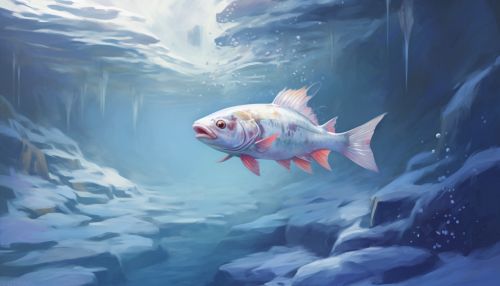Adaptation of Fish to Cold Environments
Introduction
Fish are a diverse group of aquatic organisms that have evolved to inhabit a wide range of environments. One such environment is the cold waters of the polar regions and the deep sea, where temperatures can drop below freezing. The adaptation of fish to these cold environments is a fascinating topic that delves into the realms of physiology, ecology, and evolutionary biology.
Physiological Adaptations
Fish have developed a number of physiological adaptations to survive in cold environments. These adaptations are primarily related to maintaining metabolic processes at low temperatures and dealing with the physical properties of cold water.
Metabolic Processes


Fish living in cold environments have to maintain their metabolic processes at low temperatures. This is achieved through a number of mechanisms, including the production of antifreeze proteins (AFPs). These proteins bind to ice crystals in the fish's body, preventing them from growing and causing damage. Some fish also have a higher concentration of unsaturated fatty acids in their cell membranes, which remain fluid at lower temperatures and allow for normal cellular function.
Physical Properties of Cold Water
Cold water has different physical properties than warmer water. It is denser and contains more dissolved oxygen, but it also has a higher viscosity, which can make swimming more difficult. Fish have adapted to these conditions in various ways. For instance, some species have developed streamlined bodies and efficient swimming techniques to overcome the increased resistance caused by the higher viscosity of cold water.
Ecological Adaptations
In addition to physiological adaptations, fish have also developed ecological adaptations to survive in cold environments. These adaptations are related to finding food and avoiding predators in these challenging habitats.
Foraging and Feeding
In cold environments, food can be scarce and difficult to find. Fish have adapted to this challenge by developing specialized foraging strategies and feeding mechanisms. For example, some species of Arctic fish are benthic feeders, meaning they feed on organisms that live on the sea floor. These fish have downward-facing mouths and sensory barbels that help them locate food in the dark, cold depths.
Predator Avoidance
Avoiding predators is another challenge for fish living in cold environments. Some species have developed cryptic coloration to blend in with their icy surroundings, making them less visible to predators. Others have evolved to produce antifreeze proteins not only in their body fluids but also in their skin, making them less palatable to predators.
Evolutionary Adaptations
The adaptations of fish to cold environments are not just physiological and ecological, but also evolutionary. Over millions of years, fish have evolved features that enable them to survive and thrive in these harsh conditions.
Evolution of Antifreeze Proteins
The evolution of antifreeze proteins in fish is a fascinating example of how organisms can adapt to extreme environments. These proteins are thought to have evolved from existing proteins in the fish's body through a process of gene duplication and subsequent mutation.
Speciation and Diversification
Cold environments have also driven speciation and diversification in fish. For example, the isolation of populations in glacial lakes during the last ice age led to the evolution of distinct species. This process, known as allopatric speciation, has contributed to the diversity of fish species in cold environments.
Conclusion
The adaptation of fish to cold environments is a complex process that involves a range of physiological, ecological, and evolutionary mechanisms. These adaptations enable fish to survive in some of the most extreme environments on Earth, and they provide fascinating insights into the resilience and versatility of life.
